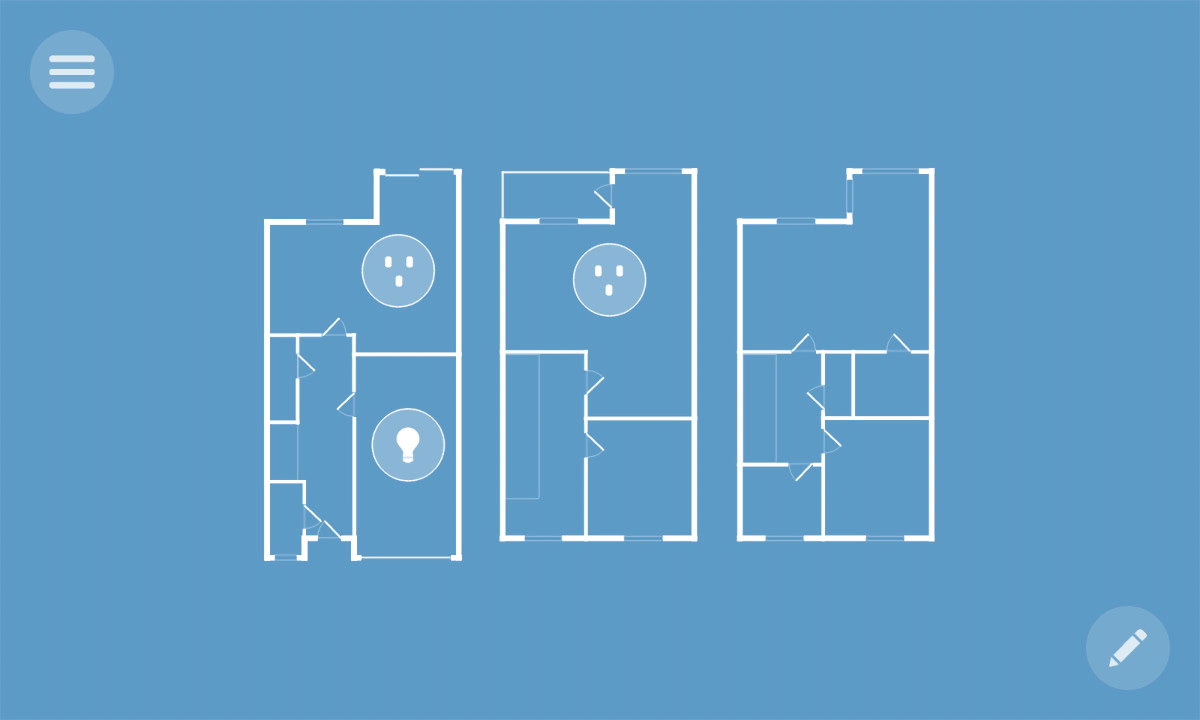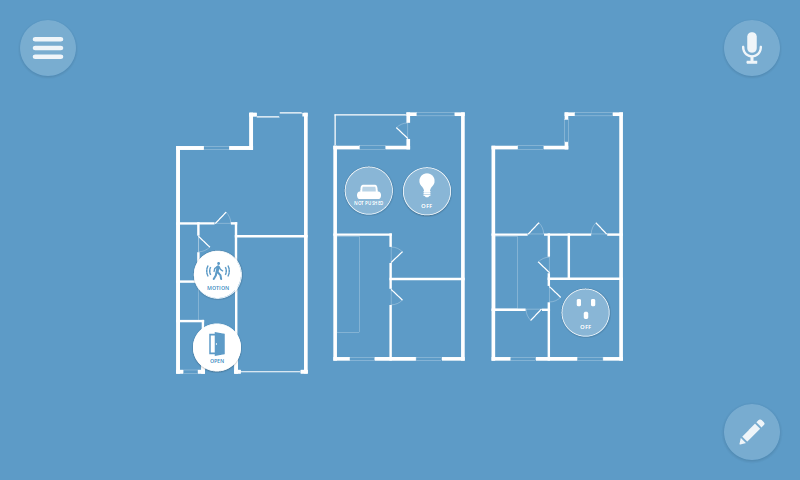Essentially, IoT devices are mini computers, connected to the internet, and are vulnerable to malware and hacking. Machine learning is when computers learn in a similar way to humans — by collecting data from their surroundings — and it is what makes IoT devices smart. WebThings Gateway is an open source implementation of a Web of Things gateway which bridges a range of different IoT protocols to the Web Thing API and provides a web interface for users to monitor and control devices.

The Internet of Things is a lot like it sounds. The IoT is a growing system of billions of devices — or things — worldwide that connect to the internet and to each other through wireless networks.

Before you post anything new, please search through the IoT topic for similar posts and read through the following. General If you’re unsure about how to work the UI, or how to set the gateway up at all, you may want t 2: 1001: March 3, 2020. Firefox maker Mozilla has launched a new, open standard for IoT and smart homes called Project Things. Mozilla announced that Project Things 'makes it easy for anyone with a Raspberry Pi to build their own Things Gateway to control any kind of smart device directly from the web.' Ben Francis, part of the original Mozilla IoT team, explained in his article titled Building the Web of Things the project goals to make connected devices inter-operate securely in a decentralized.
What are some examples of IoT devices, and how do they work?
Although the name “Internet of Things” may be unfamiliar, you may recognize this connected ecosystem better as “smart homes” or “connected homes,” which include the various IoT devices that make your home life easier. But IoT devices are also found outside the home. They can range from a Wi-Fi pet camera on your bookshelf to a medical device implanted in your body, like a pacemaker. As long as the device is able to connect to the internet and has sensors that transmit data, it can be considered an IoT device. Although your smartphone can do both, it’s not an IoT device.
How do IoT devices work?
Smartphones do play a large role in the IoT, however, because many IoT devices can be controlled through an app on a smartphone. You can use your smartphone to communicate with your smart thermostat, for example, to deliver the perfect temperature for you by the time you get home from work. Another plus? This can eliminate unneeded heating or cooling while you’re away, potentially saving you money on energy costs.
IoT devices contain sensors and mini-computer processors that act on the data collected by the sensors via machine learning. Essentially, IoT devices are mini computers, connected to the internet, and are vulnerable to malware and hacking.
Mozilla Iot Mqtt
Machine learning is when computers learn in a similar way to humans — by collecting data from their surroundings — and it is what makes IoT devices smart. This data can help the machine learn your preferences and adjust itself accordingly. Machine learning is a type of artificial intelligence that helps computers learn without having to be programmed by someone.
That doesn’t mean your smart speaker will discuss the key points of last night’s big game with you. But your connected refrigerator may send you an alert on your smartphone that you’re low on eggs and milk because it knows you’re near a supermarket.
What are the benefits of the IoT?
The Internet of Things is designed to make our lives more convenient. Here are a few examples:
- Smart bathroom scales working in tandem with your treadmill, delivering food preparation ideas to your laptop or smartphone, so you stay healthy.
- Security devices monitoring your home, turning lights on and off as you enter and exit rooms, and streaming video so you can check in while you’re away.
- Smart voice assistants placing your usual takeout order on command, making it a breeze to get fresh food delivered to your door.
Mozilla Iot Github
The history and future of IoT
It’s not science fiction. We are living connected lives filled with internet-enabled devices that learn our preferences and provide the experiences we want to make our lives more convenient. And the technology that makes it possible to connect our lives is expanding.
It all started in the early 1980s when Carnegie Mellon University students developed the first internet-connected device. It was a Coke vending machine that would tell the programmers if the soda was cold enough for them to want to make the trip from their desks to the machine.
Since then, the IoT has exploded. What about the future? Devices are growing smaller and smarter. Eventually, everything from your toothbrush to your toaster may be connected to the internet 24x7. Your gadgets will become household aides, each chatting with one another, working to serve you better.
IoT security and privacy: What you need to know
What could go wrong? As with any technology, there’s the potential for good and bad.
Convenience is good. But connectedness can also open the door to cybercriminals. Cyberattacks already access data like bank logins, credit card numbers, and more. Strong security is essential.

Consider some of the potential risks of IoT — and those mini CPUs. What if someone hacks your IoT security cameras and watches your every move? What if a cybercriminal commandeers your smart TV, smoke alarms, or front-door lock? Connectedness can create vulnerabilities.
It’s smart to help ensure these connections stay safe and secure — just like you protect yourself against cybercrime. The Internet of Things will continue to open up opportunities for new online threats.
One of the best ways to help defend your networked devices is to make sure that your router is secure. That way, it can protect your entire home Wi-Fi network and the devices connected to it. Think of your Wi-Fi router as the front door to your online world.
Cyber threats have evolved, and so have we.
Norton 360™ with LifeLock™, all-in-one, comprehensive protection against viruses, malware, identity theft, online tracking and much, much more.
Editorial note: Our articles provide educational information for you. NortonLifeLock offerings may not cover or protect against every type of crime, fraud, or threat we write about. Our goal is to increase awareness about cyber safety. Please review complete Terms during enrollment or setup. Remember that no one can prevent all identity theft or cybercrime, and that LifeLock does not monitor all transactions at all businesses.
Copyright © 2021 NortonLifeLock Inc. All rights reserved. NortonLifeLock, the NortonLifeLock Logo, the Checkmark Logo, Norton, LifeLock, and the LockMan Logo are trademarks or registered trademarks of NortonLifeLock Inc. or its affiliates in the United States and other countries. Firefox is a trademark of Mozilla Foundation. Android, Google Chrome, Google Play and the Google Play logo are trademarks of Google, LLC. Mac, iPhone, iPad, Apple and the Apple logo are trademarks of Apple Inc., registered in the U.S. and other countries. App Store is a service mark of Apple Inc. Alexa and all related logos are trademarks of Amazon.com, Inc. or its affiliates. Microsoft and the Window logo are trademarks of Microsoft Corporation in the U.S. and other countries. The Android robot is reproduced or modified from work created and shared by Google and used according to terms described in the Creative Commons 3.0 Attribution License. Other names may be trademarks of their respective owners.
Mozilla Iot Gateway
WebThings is an open platform for monitoring and controlling devices over the web.
It is an open source implementation of emerging Web of Things standards at the W3C.
User Guide
WebThings Gateway
WebThings Gateway is a software distribution for smart home gateways which allows users to directly monitor and control their smart home over the web, without a middleman.
Tips
Developer Guide
Web Thing API
The Web Thing API is the REST & WebSockets API used by the WebThings IoT platform for monitoring and controlling devices over the web. Parts of the Web Thing API specification are currently being standardised via the W3C.
- Web Thing API specification
WebThings Gateway
WebThings Gateway is an open source implementation of a Web of Things gateway which bridges a range of different IoT protocols to the Web Thing API and provides a web interface for users to monitor and control devices.
Add-Ons
- Examples:
- Add-on APIs

WebThings Framework
WebThings Framework is a collection of re-usable software components to help developers build their own web things which directly expose the Web Thing API.

WebThings Libraries
Third Party Libraries
- IoT.js by rzr
- C# by lillo42
- Go by rzr
- Go by dravenk
- ESP-IDF by akshayvernekar
- PHP by maliknaik16
- Python by hidaris
WebThings Cloud
WebThings Cloud is a collection of cloud services for remotely managing web things over the internet. WebThings Cloud includes a remote access service which can create an end-to-end encrypted tunnel between a WoT gateway (or device) and a WoT client so that it can be securely accessed over the internet.
Tips
Mozilla Iot Addons
External Resources
Mozilla Iot
- Mozilla Hacks Blog - Web of Things - Original Mozilla WebThings blog
- TwoBraids Blog - Blog posts about WebThings
